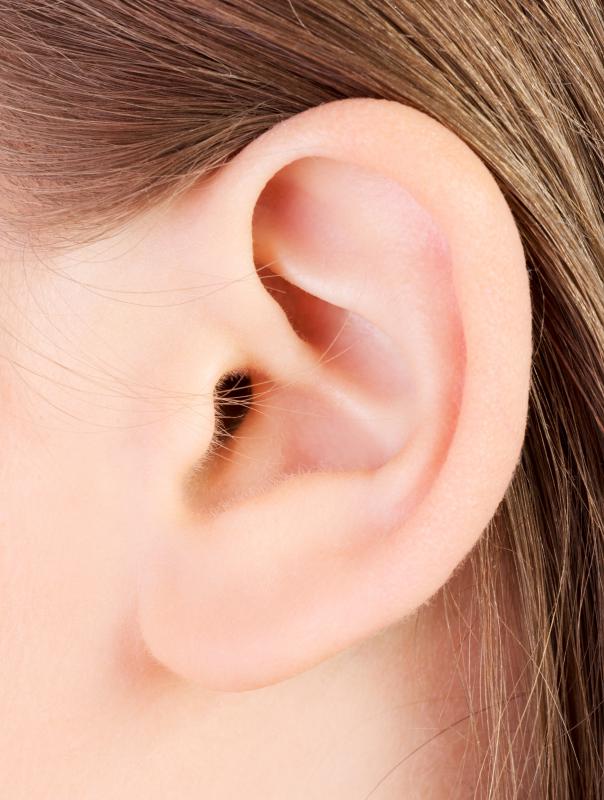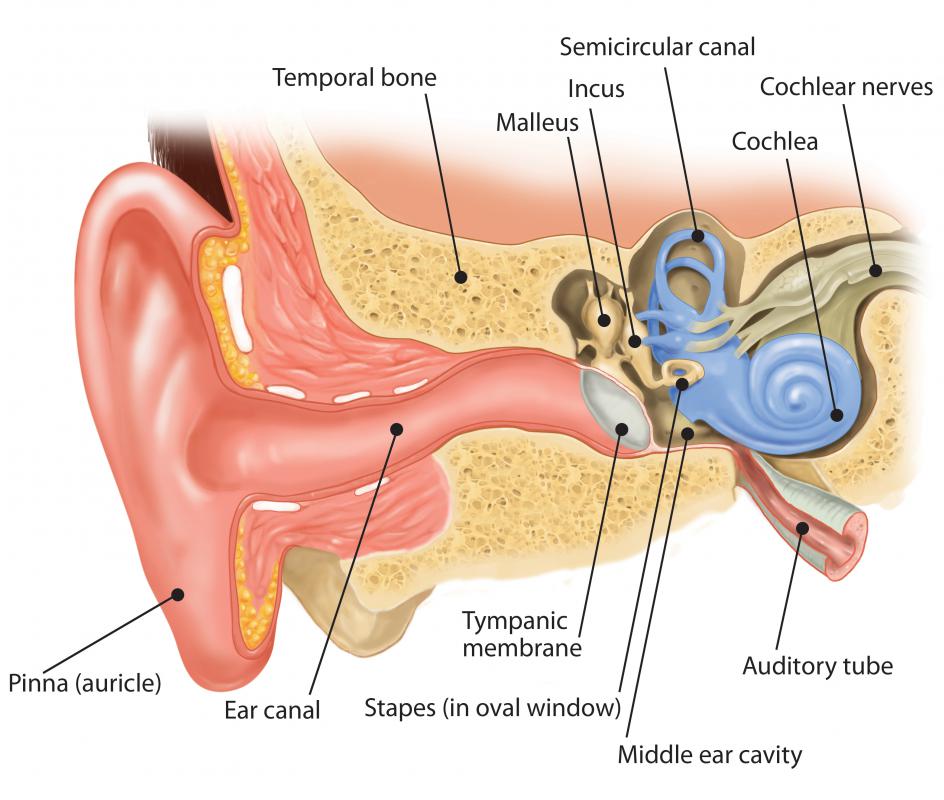At WiseGEEK, we're committed to delivering accurate, trustworthy information. Our expert-authored content is rigorously fact-checked and sourced from credible authorities. Discover how we uphold the highest standards in providing you with reliable knowledge.
What are the Most Common Symptoms of a Perforated Eardrum?
A perforated eardrum is a condition in which the ear's tympanic membrane becomes punctured or ruptured, typically causing pain and discomfort inside the ear; pain is often the first indication a person has that there is a problem. Other common symptoms of an eardrum perforation are vertigo, hearing loss, a ringing or buzzing sound in the ear, and discharge of fluid or blood from the ear. Some people may experience only one of these symptoms, while others may experience several of them. It is possible to have a perforated eardrum and have none of these symptoms, but simply feel that something is not quite right with the ear.
The level of pain experienced varies, ranging from mild discomfort to extreme, sharp pain. Somebody suffering from vertigo, which is often described as an illusion of movement, feels as if either he or his surroundings is moving or spinning when, in fact, he is standing still. Hearing loss is a common symptom of a perforated eardrum, because this part of the ear receives vibrations from the outer ear and sends these signals to the so-called hearing bones in the middle section of the ear.

It is common for people to have a perforation in the eardrum and not know what caused it. It could be the result of something as simple as a very sudden, loud noise. Other causes include a direct injury to the ear, such as a punch; an abrupt change in air pressure; or damage from an object that has been inserted into the ear, such as a pen.
A perforated eardrum is not normally a serious matter and will usually repair itself within six to eight weeks. A doctor may prescribe antibiotics to prevent an infection to the ear, which is a common side effect because a puncture in the fine, protective layer of tissue lets germs and bacteria reach the middle and inner ear. If the perforated eardrum does not heal on its own, it can be repaired with a straightforward surgical procedure called tympanoplasty. Chemicals also may be applied next to the tear to encourage healing.

Certain symptoms of a pierced eardrum indicate a more serious problem and should be shared with a doctor. These are difficulty walking, a sudden change in hearing, a loss of taste, and an extreme spinning sensation. If the person also has a stiff neck; a high fever; a severe headache; numbness or weakness in his face, arms or legs; difficulty talking or opening his mouth; non-stop vomiting, a sudden change in vision; difficulty staying awake; or pain or swelling behind his ear, he should immediately seek medical attention. These symptoms are rare, but they can indicate a potentially life-threatening complication of a perforated eardrum.
AS FEATURED ON:
AS FEATURED ON:





















Discuss this Article
Post your comments